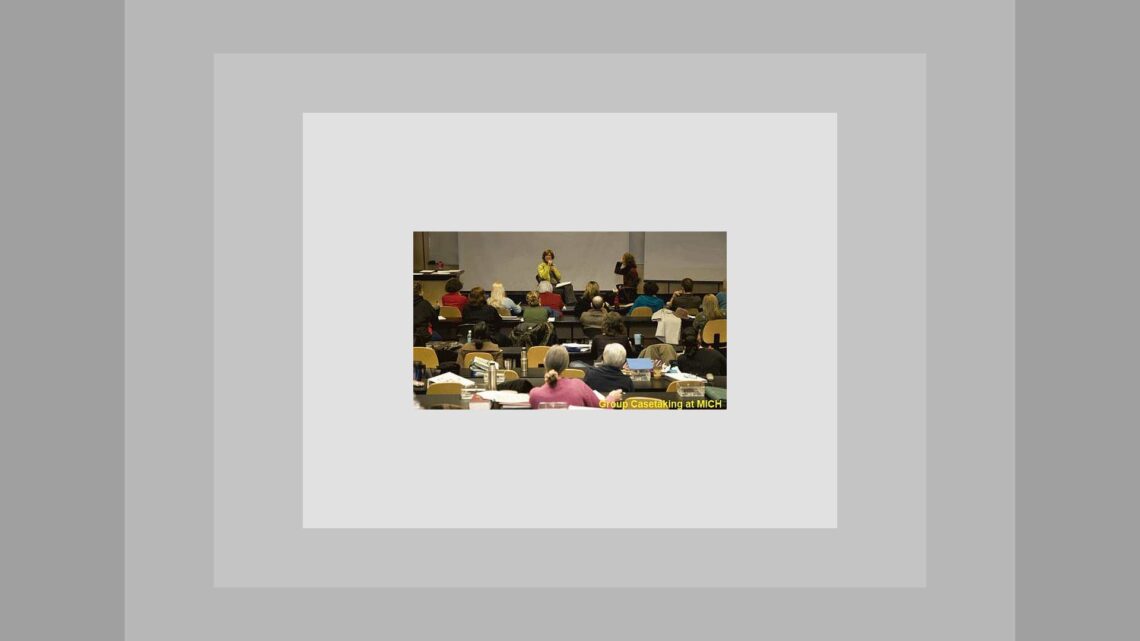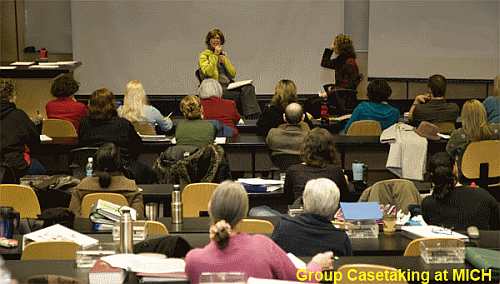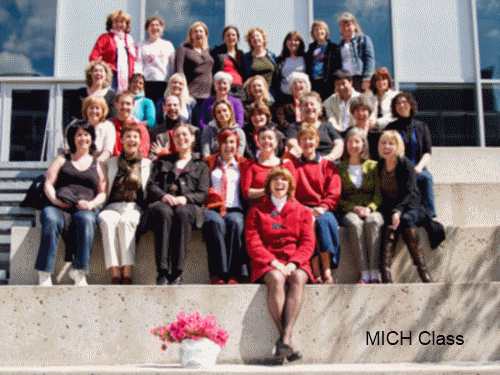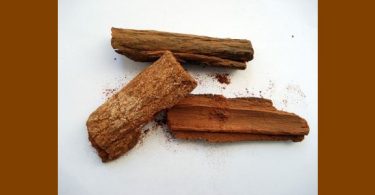For many years, a group of us – practitioners and teachers – got together every month to look at cases. We were exploring holistic practice, which for us meant seeing the individual and his or her disease as a totality. This exploration was our effort to faithfully follow Hahnemann’s directive to find and address the “Totality of Symptoms” in every case, rather than prescribing on individual symptoms that are not connected. Our goal for each case was to find the core that connects the collection of symptoms as a complete whole. It was hard work. It is so much easier to gather symptoms and repertorize…but the results from prescribing this way are spotty at best.
In learning to perceive our cases as “totalities,” we found that neither analysis nor synthesis were of any help. It required a way of seeing that was beyond a mechanical gathering of information and problem solving methods. Each case required insight, and the process of coming to this insight was unique for every case. Of course! What else could it be? The “essence” of each individual is unique, each individual requires unique treatment, and each individual disease has a unique pathway to cure. It logically follows that the diagnostic process and the perception required is also unique to every case. No protocols are allowed if we follow Hahnemann’s instructions!
It became clear when we looked at follow-ups, how this quality of perception is central to successful homeopathic prescribing. The best results came from those cases where the totality, the connection which brought all the key symptoms together in a theme, was clear to everyone. In other words, the more complete and unanimous the understanding, the better the results.
But, how do you get 15 homeopaths to agree on how to treat a case? Hahnemann’s emphasis on the unprejudiced mind helped us see how we must all be in a state of open inquiry both in the case taking and the case discussion. We discovered that it is not always easy to be open and detached. What gets in the way? We do! When we consider that our sense of self is based on our ideas and opinions, at some point, a different or what seems to be a conflicting idea can feel threatening. These discussions required a lot of self awareness for us to be sufficiently detached from the outcome, detached from our opinions and ideas, and completely open to the natural unfolding of both the case and the discussion for insight to occur. We developed nonjudgmental, encouraging ways and means of helping each other and ourselves to be more self aware and to get out of the way of the process.
We now realized that the natural unfolding of the case can be seriously hampered by the homeopath. We began to see how often we got in the way and what was most difficult in case taking. Hahnemann refers to each individual case of disease as a uniquely individual expression. If you ponder that for a moment it becomes obvious that if something is unique, then by definition, it is something that no one else has ever experienced. In order to find the simillimum, the homeopath must be able to perceive something in someone else that she has never heard, considered, or experienced before. The homeopath is listening for something outside the realm of what is known to her.
We found that to hear something unique required: (1) becoming aware when we did not understand something, (2) staying in the discomfort of not comprehending without reacting to it, and (3) bringing awareness to the ways we would avoid, repress or escape from that discomfort.
We shared together that we all experienced the state of non-comprehension as uncomfortable and even threatening! Our brain and nervous system are programmed to do anything to avoid being in that state. The automatic, immediate reaction is to avoid being in the unknown. We realized that this is why, even in our daily lives and relationships, we often assume we know what others mean when they are telling us how they feel. This automatic response is what gets in the way of taking a case. It is also what gets in the way of most communication.
We also found that this reaction can be of various flavors. Some examples are:
• trying to “fit” things into a perspective
• translating the words or concepts into ones which feel more comfortable
• blanking out that which is not recognized or uncommon
• having an emotional reaction (e.g. feeling nervous, getting angry, frustrated, blaming)
• rationalizing when not comprehending
• being distracted, thinking about something else
• completely avoiding, or being un-aware that the challenge even occurred
Changing this automatic response involves changing the way the mind works, and the way the thinking process operates.
Since we were teachers and had been teaching for many years, we were also considering how we would teach this process to our interns. We realized that this “perception of the whole” falls outside the category of conventional teaching methods and education.
What a challenge! By 2005 we felt we were up to the challenge of creating a program that taught homeopathy and especially case taking as a “totality”. We had already experimented with integrative approaches to learning. We knew that theory is not enough, homeopathy students must be wholly involved in learning experiences. They had to practice open inquiry in all stages of homeopathic training. We needed to devise case taking and case discussion exercises which would take down the limiting fetters of the thinking process and open the mind to the natural unfolding of reality and truth, and encourage the self awareness integral to the whole process.
We devised a program that involved multi-media presentations for the whole group, followed by small group exercises, discussions, and integration of what was presented in the large group. We also put emphasis not on just teaching the individual student, but on creating collaborative tools, techniques and approaches that facilitate group work and partnership. We had realized that success was more consistent when we collaborated with others who complement our skills and help us be aware when we’re not perceiving the uniqueness of the case. Teaching collaboration creates a foundation for partnerships within the homeopathic community and amongst its practitioners.
It became a course with emphasis on student participation, including helping them improve their presentation skills. We all know that an important part of becoming a homeopath is learning to educate the community at large.
We also created continuing education for our graduates to ensure our long-term goals of creating community so that our homeopaths are not practicing in isolation.
Now that our first group of graduates is practicing, and the second group is on its way, we can say that our MICH experience has been even more fulfilling, more gratifying, more expansive than we had imagined. The program challenges us all – students and teachers alike – to grow and evolve beyond our own limitations and points of view. Our world view, our understanding of homeopathy, our relationships – both personal and professional have taken quantum leaps! It is hard work, but worth it on every level. We work as a group, collaboratively preparing each class, exercise, exam. We look forward to our meetings, and our classes, we all go home enriched from the experience.
References:
i. Dialogue
The method of Dialogue developed by Quantum Physicist David Bohm has proven itself to be an effective way to ensure good communication and activate students, as well as develop collaboration and a wholistic model for inquiry. Dialogue facilitates coming to the image totality in case discussions. See: http://www.david-bohm.net/dialogue/
ii. Self Evaluation as a teaching tool
Asking the students to review the list of professional homeopathic competencies and scoring themselves on a regular basis, helps them to monitor their learning, set their study goals and gauge their understanding. This review of professional competencies helps them to integrate what it means to be a homeopath – specifically. As a graduate, they will have acquired the essential skill of evaluating their own performance in each case, and the ability to monitor the need for post graduate professional training or the need to refer a case.
iii. Case taking as an Integrative approach to homeopathy
Video and live cases shown from the very beginning of the training can be used as a vehicle to integrate all aspects of homeopathic training (materia medica, case taking, etc.).
- Remedies from the Materia Medica are always presented within the context of a real case.
- Parts of video-taped cases which relate to the subject matter at hand, are shown as examples.
- Videos and live cases are used in class to model case taking. The video or case is regularly stopped and the students are asked to provide their observations or the next step. In this way, students learn to actively follow a patient and take notes.
iv. Direct experience
Students actively participate in practical exercises involving different aspects of case taking. They each practice a specific part of the homeopathic conversation such as: patient observation, listening, following the patient, self-awareness, questioning, and awareness of the process itself. The students are usually in groups of three. An example would be that one student plays the role of patient, another the homeopath, and another observes a particular aspect of the process or exchange. Then the students change roles until everyone has played each role. A graduate or facilitator supervises each group. As students increase their understanding and their capacity these exercises gradually evolve into full case taking.
v. Personal experience
Students are required to see a personal homeopath (usually a graduate of the school) on a regular basis in order to appreciate the role of the patient, understand the action of remedies, and have the direct experience of case taking.
Montreal Institute of Classical Homeopathy
http://www.homeopathymontreal.com/
Additional References
Bohm, D. (1980) Wholeness and the Implicate Order. New York: Routledge
Bohm, D. (2004) On Dialogue. New York: Routledge
Gerber, A. Jr. (2001) Wholeness: On Education, Buckmunster Fuller, and Tao. Washington: Gerber Educational Resources.
Krishnamurti, J (1953) Education and the Significance of Life. Madras: Krishnamurti Foundation India.
Krishnamurti, J (1978) The Wholeness of Life. Madras: Krishnamurti Foundation Trust.
Smuts, J. C. and S. Holst (ed.) (1999) Holism and Evolution: The Original Source of the Holistic Approach to Life. Sherman Oaks: Sierra Sun Publishing.
Wilber, K. (editor) (1982) The Holographic Paradigm and Other Paradoxes: Exploring the Leading Edge of Science. Boston: Shambala.
Wilber, K. (2007) Integral Life Practice: A 21st-Century Blueprint for Physical Health, Emotional Balance, Mental Clarity, and Spiritual Awakening. Boston: Integral Books






